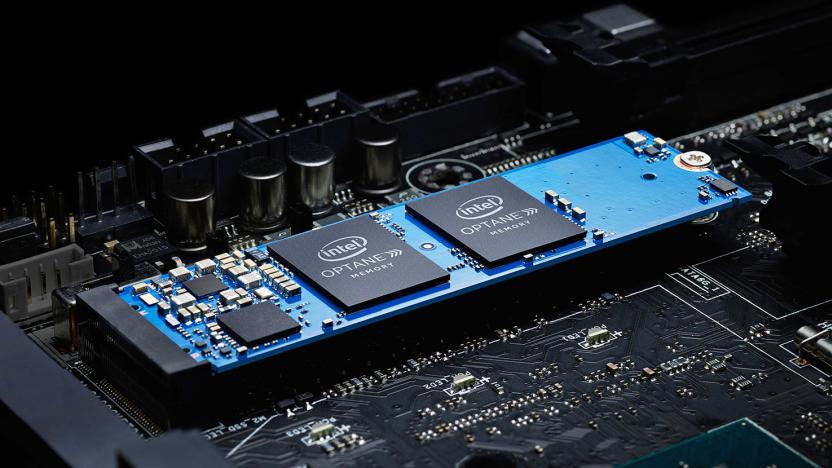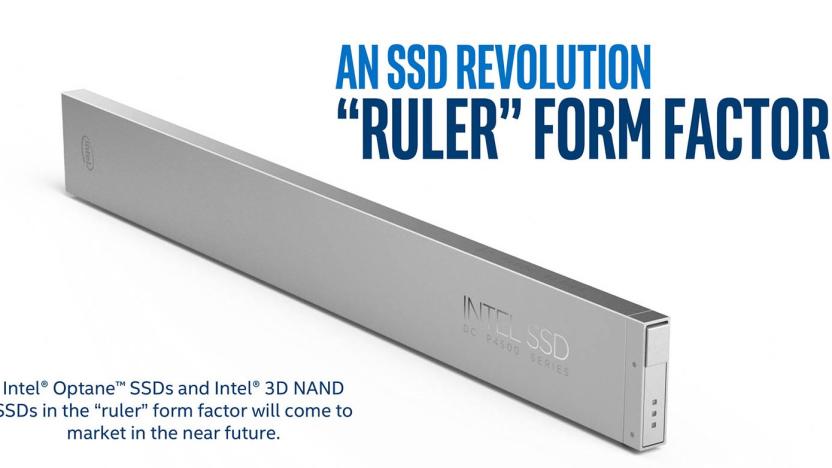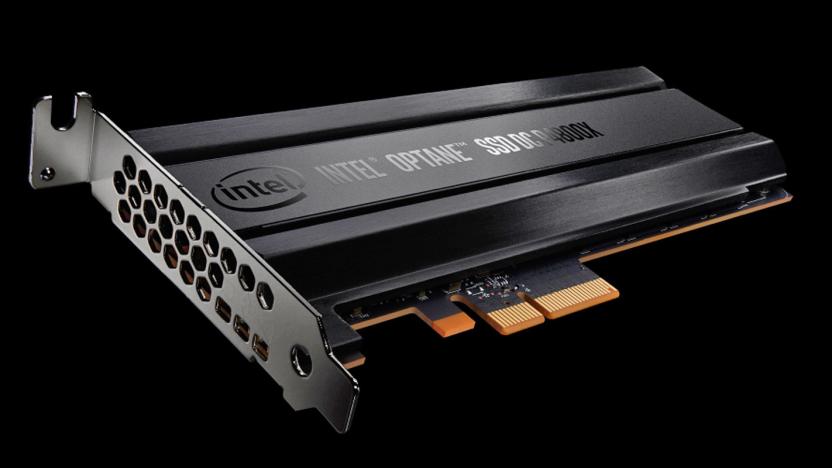Optane
Latest

HP's Omen X 2S is a dual-screen gaming laptop
Now that most gaming laptops are thin, light and powerful, what can a company do to stand out from the crowd? HP has the answer with the Omen X 2S, which packs the "world's first dual-screen design," the company said. The primary 15-inch panel is a 1080p, 144Hz G-Sync IPS (or optionally, a 240Hz G-Sync or 4K) model, which is pretty standard on high-end gaming laptops. However, the second 6-inch, 1080p display located above the keyboard lets you watch streaming videos, play music, monitor system performance or chat on your favorite platform -- simply hit the dedicated key on the far right when your desired window is in focus. You can also window sections of the main screen (like maps, for instance) to give yourself better situational awareness. If you want a better aim in first-person shooters, this feature comes in handy, too (but surely that's cheating?).

Intel's 9th-generation Core processors reach up to 5GHz
The rumors were (mostly) true: Intel has unveiled its first 9th-generation Core processors, aiming them at desktop-based enthusiasts. The updated CPUs ultimately represent a refinement of Intel's existing 14-nanometer chips, but promise both more headroom for overclocking (thanks to new soldering), support for Optane-based memory sticks and hardware-level mitigations for Spectre and Meltdown attacks. Naturally, they also boast lots of cores -- not as many as that 28-core Xeon, but you can now expect at least eight cores and the same 18 cores as last year in the flagship Core i9-9980XE model. The Core i9-9900K, meanwhile, is billed as the first "broad volume" processor to hit 5GHz, albeit 'just' when using one of its eight cores (it normally starts at 3.6GHz).

What is Intel Optane?
A few months ago, Intel launched Optane, the first new memory technology to hit the PC market since Toshiba released commercial flash memory over three decades ago. Intel claims this new storage medium will be more durable than flash, and an order of magnitude faster. As with all new technologies, things aren't perfect yet, but Optane's strengths are evident already. Join us on a brief journey through the past, present and future of PC storage, as we explain why you should (and shouldn't) care about Optane right now.

Intel's push for petabyte SSDs requires a new kind of drive
There aren't many ways to make data center storage exciting, but mentioning a drive that could hold up to one petabyte (1,000 terabytes) comes close. Intel is making the case to swap out old disk-based drives in data centers with SSDs, and as part of that it's showing off a new "Ruler" form factor. Instead of molding to the 2.5-inch and 3.5-inch size of traditional drives or just the dimensions of a PCIe slot, its long skinny shape fits into a standard rack mounted server. As TechGage notes, with regular 10TB hard drives, slapping together a petabyte's worth would fill up a 100-bay 4U server. The new Ruler drives aren't available yet, but Intel claims it will offer them with both its Optane and 3D NAND SSDs in the "near future."

Intel's extra-fast 3D storage comes to your desktop PC
It didn't take long for Intel's 3D Optane storage to reach a product you can realistically buy. The chip maker has introduced Optane modules designed to boost the performance of your desktop PC. They're strictly cache drives that only hold 16GB or 32GB (the server module packs 375GB), but don't let that dismay you. In theory, the combination of extremely low latency (under 10 microseconds) with solid state drive speeds (at least 900MB/s in peak sequential reads) should dramatically reduce loading times across the board.

Intel's first hyper-fast 3D drive is meant for servers
At last, Intel is making a stand-alone drive based on its extremely fast 3D storage technology... although you're probably not about to pick one up yourself. The chip maker has unveiled the Optane SSD DC P4800X, a drive destined for the PCI Express or NVMe slots in servers. It only has 375GB of space, but its extremely low latency (typically under 10µs) and 2GB/s throughput means that it can serve as either a memory cache or storage. If you're involved in high-performance computing, online shopping or other categories obsessed with gobs of RAM and rapid turnaround times, this is theoretically your dream device.

Lenovo's latest ThinkPads ship bloatware-free
It's virtually a tradition for Lenovo to unveil new ThinkPads around CES time, but this year it's doing something a bit different: its systems are defined by what they don't have. The PC builder has just unveiled a slew of mid-tier ThinkPad laptops that all run Microsoft's Signature Edition image of Windows 10 -- that is, you shouldn't expect bloatware bogging things down or introducing security holes. While ThinkPads have had cleaner software than Lenovo's non-pro systems as a general rule, this is good news if you're more interested in getting to work than dealing with unwanted apps.



